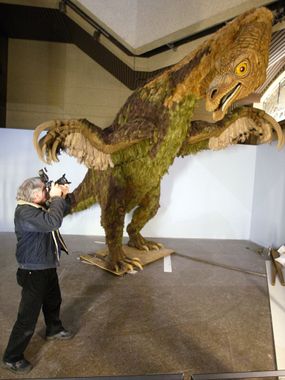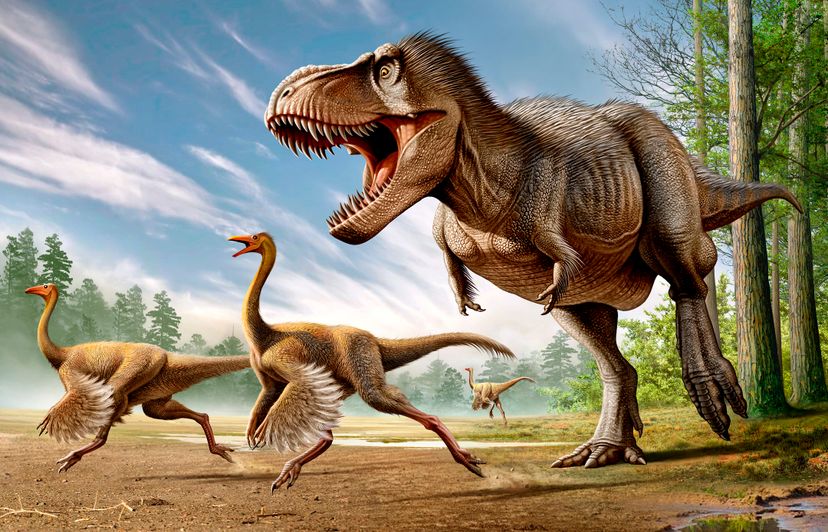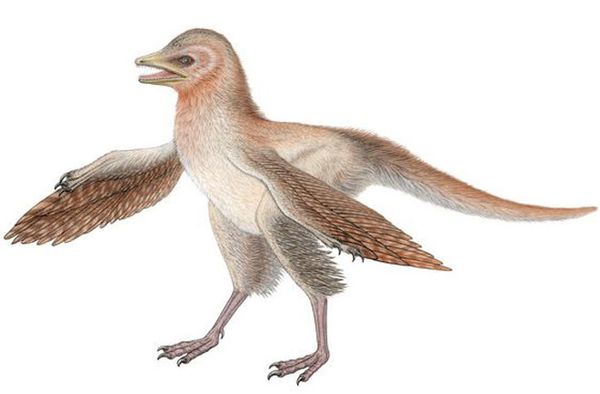
It's been about 66 million years or so since dinosaurs roamed the Earth. Most of us learned most of what we think we know about the ferocious beasts from the big screen. If you were a kid in the '90s, for example, your earliest recollection of dinosaurs may be that scene from "Jurassic Park" when the guy who was Newman on "Seinfeld" was ripped to shreds by a terrifying Dilophosaurus. One of the reasons that the movie — and the multiple "Jurassic" sequels that followed — was such a hit is that production teams made the dinosaurs look so realistic. At least that's what most of us moviegoing masses seem to think.
It turns out that dinosaurs are often portrayed much differently in popular culture than how the prehistoric creatures actually looked. At least some of them were feathered creatures that resembled modern birds more than the savage giant lizards they've been made out to be on the big screen. In fact, researchers have made leaps and bounds in their understanding of the ancient animals over the last few decades — but Hollywood hasn't kept pace.
Advertisement

"'Jurassic Park' and '[Jurassic] World' look behind the times, because the science has moved on since the 1970s," says John Hutchinson, a professor of evolutionary biomechanics at the Royal Veterinary College in London. "We don't think dinosaurs were geniuses — as per the velociraptors in 'Jurassic Park' and 'World' — but we do know that some were feathered, and the larger ones weren't very fast."
Researchers in Europe and Hong Kong recently used laser imaging to get a closer look at Anchiornis, a Jurassic-era creature that resembled something like a mix between a humongous pigeon and a chicken. The research team reconstructed the Anchiornis' soft tissue features using laser-stimulated fluorescence imaging — which is a fancy way of saying they fired a super-charged beam at a fossilized skeleton to get a detailed outline of the creature. They discovered that the 12-inch-tall (30.5-centimeter-tall), four-winged Anchiornis was covered in feathers and had long forearms, legs like chicken drumsticks and scaly, webbed feet. What paleontologists still haven't settled on is whether the Anchiornis actually used its wings to fly.
And then there's theVelociraptor. Arguably one of the stars of the "Jurassic Park" series, this species is regularly portrayed as a gigantic – and usually angry – lizard. Well, they got the angry part right. The predators were likely as vicious as advertised, but studies show that they were feathered and probably looked more like prehistoric turkeys than huge, miffed versions of the Geico gecko.
So what does Hollywood have against feathers? Sure, you have to suspend reality a bit to fully enjoy a film about dinosaurs being resurrected, going rogue and threatening to wipe humans off the planet. And "Jurassic Park" was far from the first dino flick to play fast and loose with some details. Only the film gods can tell us whether the most preposterous portion of "Theodore Rex" is that we are supposed to believe that Whoopi Goldberg would partner with a dinosaur to fight crime, or that the T. Rex really looked like a human-sized chameleon that could stand to shed a few pounds.
Since the original "Jurassic Park" hit theatres in 1993, films like "Land of the Lost," "Ice Age" and "The Dinosaur Project" have continued to skew away from depictions of prehistoric animals as we now know they looked.

The "Jurassic World" creators made a passing attempt at explaining themselves toward the end of the film when one of the doctors involved in the park suggests that the creatures roaming the park may have been genetically altered. At least some movie nerds took that to mean that the dinosuars' genes were altered to look feathers-free, the way the public had come to expect them to look. In other words, it's all our fault.
"The public still is thought to be 'not ready' to see feathered dinosaurs in many programs," Hutchinson says. "They are thought to want to see the 'Jurassic Park' version over and over. So the world awaits a new paradigm in mass media that is bold enough to revisit how dinosaurs are portrayed and match it to scientific evidence."
Advertisement

